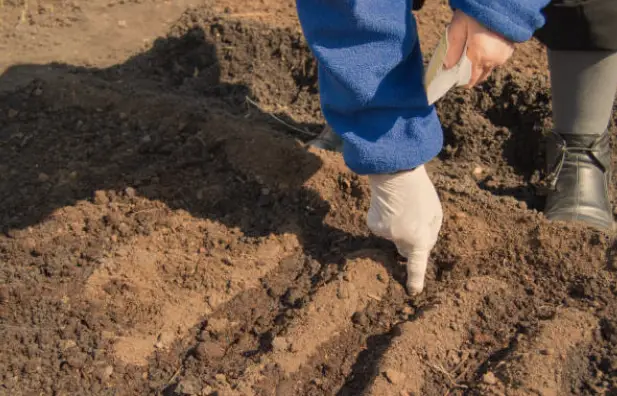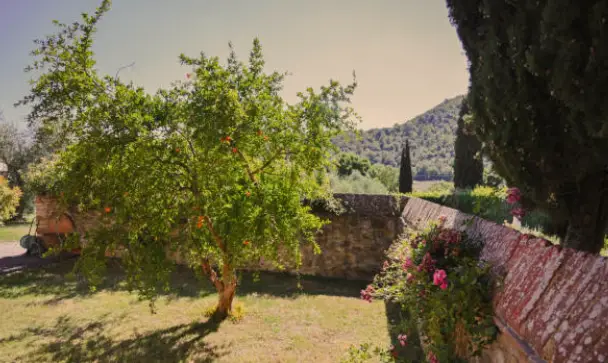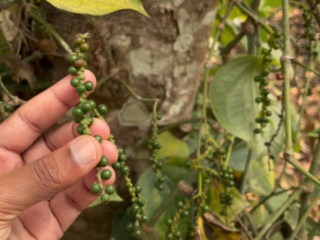Pomegranates have been around for thousands of years and have a fascinating history. It is understandable why this nutrient-dense superfood has been adored by people from all walks of life, given its ruby-red arils that burst with sweet-tart juice. Although it is possible to buy pomegranate trees from nurseries, cultivating your own seeds has a very fulfilling effect. You may grow your own pomegranate tree that will provide wonderful fruit for many years to come with a little bit of care and perseverance.
Getting Started with Pomegranate Seeds
To begin, one must procure live pomegranate seeds. Eat a fresh pomegranate without giving in to the temptation to throw away the seeds! Rather, leave some to air dry for a few days on a paper towel. Ideally, you should utilize seeds from a fruit you like, since this will show you that the plant produces high-quality pomegranates.

Alternatively, you can purchase seeds from a reputable supplier if you don’t have access to fresh pomegranate fruits. Just ensure the seeds are intended for growing pomegranates, not simply eating. Once you’ve got your seeds ready, it’s time to prepare them for germination.
Seed Preparation and Germination
Fill a clean container with warm water and add the pomegranate seeds. Let them soak for 24–48 hours. This helps to break down the hard outer seed coating and kickstart the germination process. During this time, you’ll notice the seeds swelling up as they absorb water.
After soaking, the seeds need to be stratified, which mimics the winter conditions they would experience naturally. To do this, transfer the seeds to a ziplock bag filled with a damp seed starter mix or vermiculite. You want the mixture to be moist but not soaking wet. Seal the bag and refrigerate it for 90–120 days at around 40°F. This cold period tricks the seeds into thinking they’ve gone through winter, encouraging germination once temperatures rise.
It is time to sow your pomegranate seeds when the stratification period is over! Use a well-draining seed starter mix to fill tiny pots or a seedling tray. Sow the seeds 1/2 inch deep, and give them a light mist. Keep the soil damp but not soggy, and place the tray or pots in a warm, sunny position.
Be patient, as pomegranate seeds can be slow to germinate, sometimes taking 2–3 months to sprout. Once you see the first delicate seedlings emerge, provide them with bright, indirect light. A sunny window is ideal at this stage.
Transplanting and Ongoing Care
When your pomegranate seedlings are 4-6 inches tall with their second set of true leaves, it’s time to transplant them into larger containers. Choose a pot that is at least 12 inches wide and deep and has ample drainage holes. A well-draining potting mix amended with compost is perfect for pomegranate trees.
Aim for at least 6 hours of direct sunlight every day when acclimating your young trees to increased sunlight. For pomegranates to grow, they require a lot of heat and sunshine. After nightfall and when the temperature is constantly above 50°F, move them outside.
When the top inch of soil dries out, give your pomegranate plants a thorough soak every time. Do not allow the soil to become entirely dry. During the growing season, give your trees a monthly feeding with a balanced liquid fertilizer.
As your pomegranate trees grow, you may need to repot them into larger containers annually until you’re ready to plant them in the ground after 2–3 years. Pomegranates can remain in fairly large containers for several years if needed.
Choosing a Planting Site
If you live in USDA hardiness zones 8–10, you can plant your pomegranate tree directly in the ground once it’s large enough. In cooler climates, pomegranates will need to be grown in containers that can be brought indoors for the winter.

Choosing a Planting Site
When selecting a planting site, choose an area with full sun exposure—pomegranates need at least 6–8 hours of direct sunlight daily. Well-draining soil is also essential to prevent issues like root rot. Amend heavy soils with compost or other organic matter to improve drainage and aeration.
Space pomegranate trees 15-20 feet apart since they can reach up to 25 feet tall and wide at maturity. Avoid frost pockets or low-lying areas where cold air settles. While mature trees can tolerate drought, young trees require consistent moisture.
Transplanting into the Ground
Make sure the hole you excavate for your pomegranate tree transplant is twice as wide as the root ball, but not deeper. With caution, take the tree out of its container, making sure to score the sides of the root ball to promote root growth outside of it.
Place the tree in the hole so the top of the root ball is level with the surrounding soil. Backfill with the existing soil, applying water periodically to settle it and remove air pockets. Create a modest soil berm around the outer edge of the hole to help direct water towards the root zone.
Stake your newly planted pomegranate, attaching the tree to the stake with flexible ties to allow for movement. This prevents the roots from being dislodged as the tree establishes itself.
Water thoroughly after planting and continue providing moisture whenever the top 6 inches of soil become dry. Apply 2-3 inches of organic mulch over the root zone, avoiding direct contact with the trunk.
Year-Round Pomegranate Care
Your pomegranate tree will need less frequent watering as it gets older. During the hot summer months, give mature trees deep waterings every two to three weeks; in the winter, lessen the frequency.

Feed your tree in early spring before new growth emerges. Use a balanced fertilizer following label instructions, or apply well-rotted manure or compost around the drip line. Avoid piling fertilizer against the trunk.
Pomegranates benefit from annual pruning in late winter or very early spring before bud break. Start by removing any dead, damaged, or inward-facing branches. Then, thin out overcrowded areas to improve air circulation and sunlight penetration.
As pomegranate trees age, they may need to be pruned more aggressively every few years to reinvigorate growth and production This involves cutting back up to one-third of the overall canopy height and width. Wear protective clothing when pruning, as the branches have sharp thorns!
In USDA zones 8 and below, winterize your pomegranate by withholding water and wrapping the plant in burlap or insulating covers once dormant. Cold hardy pomegranate varieties like ‘Salavatski’ and ‘Kazake’ can withstand temperatures down to 10°F if protected during extreme cold snaps.
Pomegranate trees tend to bear fruit in their 3rd or 4th year, becoming more prolific with age. With the right care and climate, a mature pomegranate can produce hundreds of fruits annually.
So whether you start from a humble seed or purchase a nursery plant, growing your own pomegranate tree is an immensely rewarding experience. Just be prepared to wait patiently for a few years for that first sweet harvest of ruby gems!




